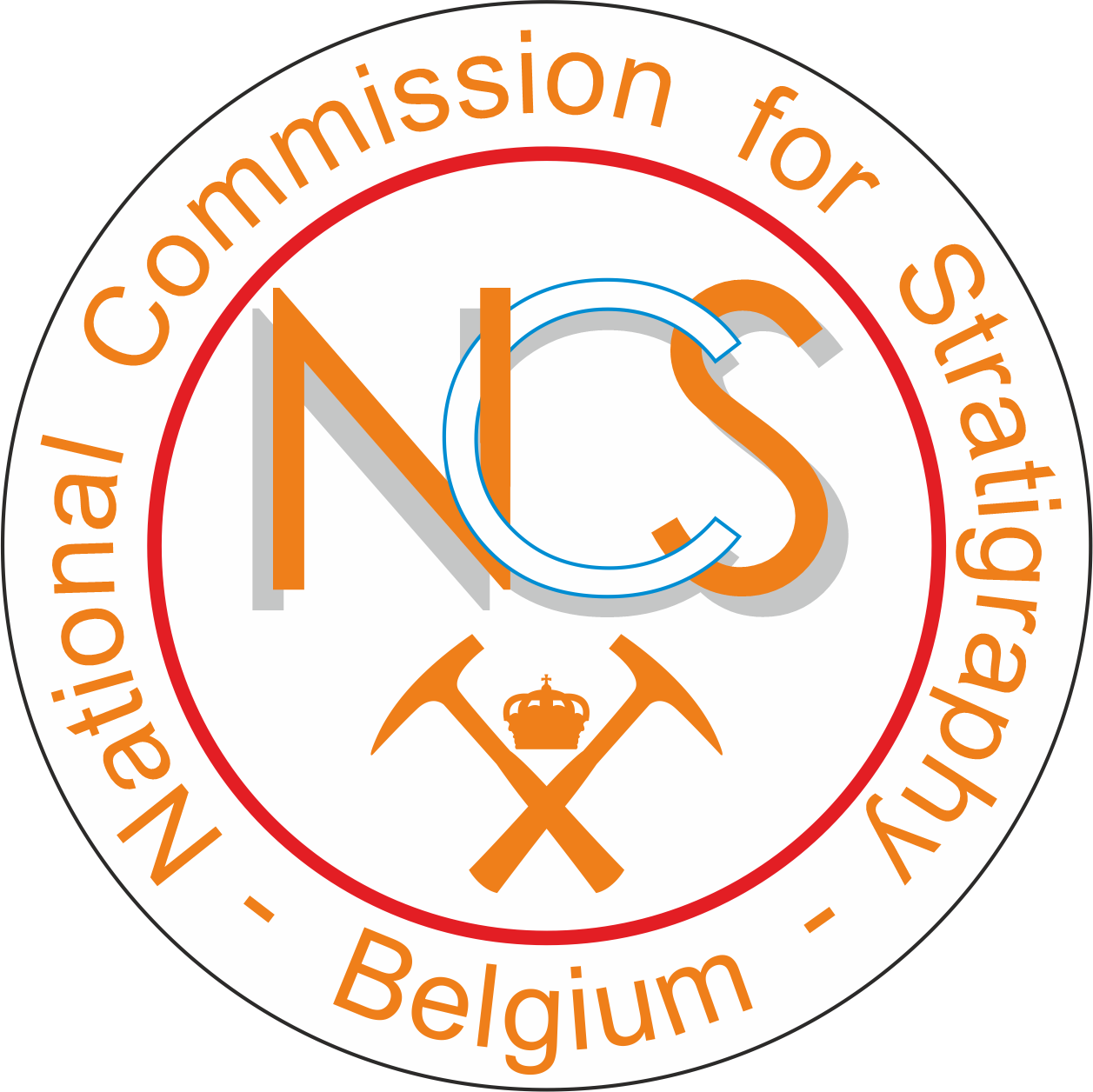The information on this page is a summary description.
The full formal description is available here: Kortrijk Formation
| Abbreviation | Ko |
| Parent unit | Ieper Group |
| Child units | Het Zoute Member, Mont Héribu Member, Orchies Member, Roubaix Member, Aalbeke Member |
| Lithological description | The formation is an essentially marine deposit, consisting mainly of clayey sediments. A standard sequence contains from bottom to top: ? an alternation of horizontally laminated, glauconiferous clayey sands or sandy clay, and compact, silty clay or clayey silt, locally bioturbated. The base consists of oxidized and indurated clayey sand, with lenses of pure sand (Mont Héribu). ? a homogeneous deposit of very fine silty clay, with some thin intercalations of coarse silty clay or clayey, very fine silt (Orchies Mbr); ? a less homogeneous deposit of clayey, coarse or medium silt, with some sand containing layers; fossil rich layers occur; the whole deposit becomes more sandy to the east and the south (Roubaix Mbr); ? a very fine and compact clay and in addition also silty clay parts (Aalbeke Mbr). To the east, in the Brabant and the Campine, and towards the Mons basin, the deposits become more sandy. |
| Age | Early and middle Ypresian. |
| Thickness | 125 m in the northern part of West?Flanders, but the thickness decreases in eastern and southern direction. |
| Area of occurrence | The formation is found in the western and central part of Belgium. It outcrops in the north of Hainaut, the southern and central part of West? Flanders, the south of East?Flanders Flanders and the southwest of Brabant. Outliers occur in the Mons Basin and south of the river Sambre. The regional distribution map of the occurrence of the Kortrijk Formation in Belgium is figured in Maréchal (1993, p 221) and Walstra et al. (2014) and can be consulted at the D.O.V. website (dov.vlaanderen.be). |
| Type locality | The formation is defined by boundary stratotypes in Steurbaut (1998). The lower boundary stratotype is placed at 288 m depth in the Knokke borehole (011E0138) at the base of the Het Zoute Mbr. Sheet 5/6 (Westkapelle). Coordinates: x = 78.776, y = 226.370, z = +4.91 m. The upper boundary has been placed in the Tielt cored borehole (068E0169) at the top of the Aalbeke Mbr. This cored borehole however has no geophysical well logs; therefore the top of the Aalbeke member is picked at the nearby borehole Tielt 053E0061 with geophysical well logs, shown in the compendium, but unfortunately not cored. This upper boundary is located at 48.5 m in the compendium borehole Tielt (053E0061); in earlier versions (Geets, 2000), the Aalbeke top was mislocated at 71 m. Steurbaut (1998, p117) correlated the in?the?present?text defined top of Aalbeke Member (see also further details under Aalbeke Mbr) with the top of his unit D of the Kortemark silt member (sensu Steurbaut (1998)) in the Tielt borehole located at 46.7 m. Sheet 21/6 (Wakken). Coordinates: x =76439, y = 187576, z = +48 m. |
| Alternative names | |
| Authors | Steurbaut, E., De Ceukelaire, M., Lanckacker, T., Matthijs, J., Stassen, P., Van Baelen, H. & Vandenberghe, N. |
| Date | 09/01/2017 |
| Cite as | Steurbaut, E., De Ceukelaire, M., Lanckacker, T., Matthijs, J., Stassen, P., Van Baelen, H. & Vandenberghe, N., 2017. The Kortrijk Formation, 09/01/2017. National Commission for Stratigraphy Belgium. http://ncs.naturalsciences.be/lithostratigraphy/Kortrijk-Formation |
